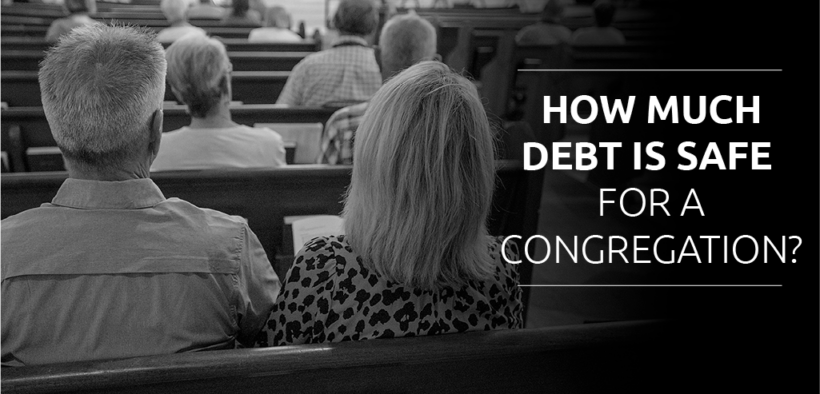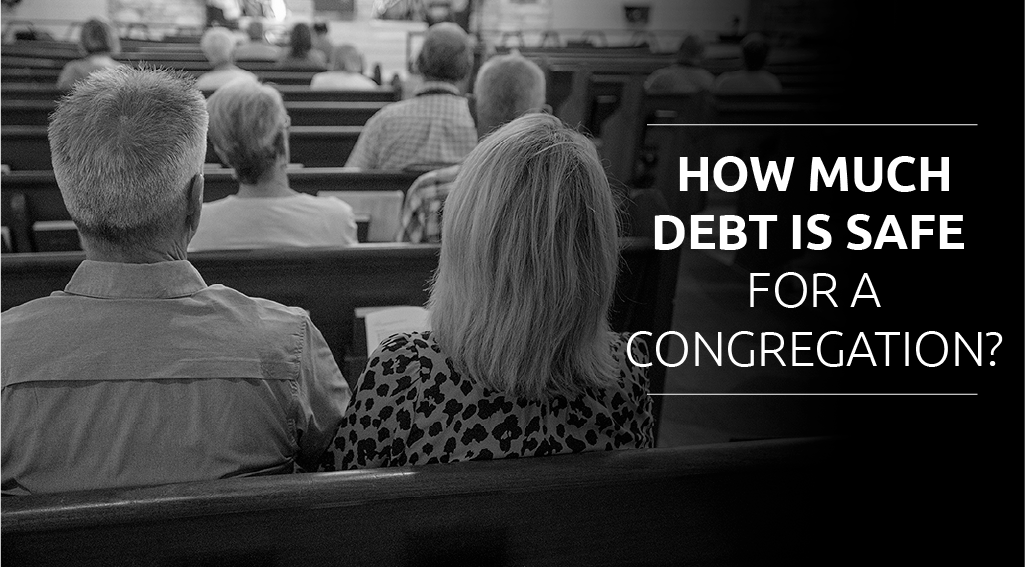How much debt is safe for a congregation?
Share


How much debt is safe for a congregation?
Are there alternatives to borrowing?
Should we have a campaign to reduce our debt?
These are just some of the questions congregations ask as they consider taking on or reducing debt. Both the Bible and sound financial practice caution against abuse and misuse of debt, but there are times when the mission and ministry of a congregation are well served by the prudent use of debt. The dangers of debt arise when the level of debt hinders rather than enhances ministry. A congregation can be “facility rich” but have such big loan payments that it cannot afford the staff and programs that enable effective ministry to take place.
How Much Debt is Safe?
The answer to this question depends on many factors. Specific answers for LCMS congregations and schools should be worked out in careful consultation with your LCEF District Vice President. He or she uses a whole toolkit of factors, both quantitative and qualitative, to determine your risk for debt. Some of those factors include the following:
Cash Flow
The biggest question a lender asks is, “Can you pay off the loan?”
How will you budget debt payments? If you can’t meet your budget now, how will you add loan payments? Will the loan truly enable growth, including financial growth?
It’s important to have a plan that addresses these questions.
Metrics
There are certain rule-of-thumb guidelines that generally make common sense. Each, of course, needs to be applied to the specific situation of the congregation.
Most agree that total debt service should not exceed 30-33% of annual contribution income. In a rapidly growing congregation, or in special circumstances, it might be more. A standard of debt not exceeding $4,000 per communicant member or $5,000 per person average worship attendance has sometimes been used.
Opinions vary on the ratio of total debt to income. Four times annual income would be generous. Very conservative would be 2.5. Much depends on the situation, and that depends upon…
Vision
Why do you want to borrow the money?
Do you have a clear vision for the future that is owned by the congregation? Or do you just want to survive or serve your own needs? LCEF’s “VisionPath” can help set a clear path for the future.
Leadership
Is there strong pastoral and lay leadership in the congregation, or is there a history of conflict and division?
Demographics
What is the age profile, giving pattern, the income level of your congregation What is the growth potential in your community?
These and other demographic factors become important.
Alternatives to Taking on Debt
When considering taking on new debt, a congregation might exercise some of the following alternatives:
Clarify Vision
Use VisionPath or some other process to clarify your vision and direction for the future.
It may be a direction that does not require new facilities or additional staffing, or it may create a vision that stirs the support of the people.
Conduct a Capital Campaign
A capital campaign may enable you to raise the money you would have borrowed.
A debt reduction campaign may lower your percentage of debt service in your budget and enable additional ministry. LCEF’s Capital Funding Services can provide helpful guidance here.
Strengthen Your Stewardship Ministry
Cash flow will improve as people grow as children of a generous God and see themselves as part of God’s mission.
Commitment to an annual stewardship emphasis such as LCEF’s Consecrated Stewards series is essential.
